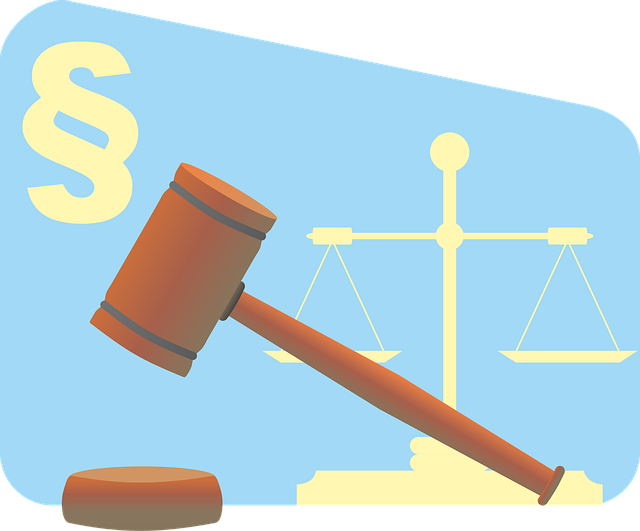Litigation risk management is vital for businesses, focusing on preventing and mitigating legal threats from contractual disputes to misconduct allegations. By proactively assessing risks, companies implement strategies like enhanced internal controls and robust documentation practices to establish reasonable doubt and protect against costly litigation. This process prioritizes fairness, ensuring strict adherence to legal procedures and aiming for positive outcomes in civil and criminal cases where proving guilt beyond a reasonable doubt is legally required. Specialized legal counsel is beneficial for complex matters, guiding clients through settlement negotiations, appeals, and jury trials to achieve favorable results.
Litigation Risk Management is an indispensable skill for any organization aiming to protect its reputation and financial health. This article guides you through the intricacies of managing potential legal risks, focusing on understanding litigation risk, developing robust defense strategies, and ensuring fairness through evidence and legal procedures. We explore how to navigate outcomes from settlement to verdict and appeal, with a key emphasis on proving guilt beyond reasonable doubt.
- Understanding Litigation Risk: Identifying Potential Threats
- Building a Strong Defense Strategy: Proving Innocence
- The Role of Evidence and Legal Procedures in Ensuring Fairness
- Managing Outcomes: From Settlement to Verdict and Appeal
Understanding Litigation Risk: Identifying Potential Threats
Understanding litigation risk is a critical step in effective risk management. Identifying potential threats involves meticulously scrutinizing all stages of the investigative and enforcement process within respective businesses, as legal battles can arise from various sources – from contractual disputes to allegations of negligence or intentional misconduct. In high-stakes cases, where proving guilt beyond reasonable doubt becomes paramount, even seemingly minor missteps can have significant consequences, leading to substantial financial losses and irreparable reputational damage.
By proactively assessing risks at every stage, businesses can implement strategies to mitigate potential liabilities. This includes enhancing internal controls, ensuring robust documentation practices, and fostering a culture of compliance. Through these measures, organizations not only safeguard themselves against legal challenges but also foster an environment that discourages disputes from escalating into costly litigation.
Building a Strong Defense Strategy: Proving Innocence
In litigation risk management, one of the cornerstones of a robust defense strategy is proving innocence, which hinges on establishing reasonable doubt in the minds of jurors or judges. The legal standard of proving guilt beyond reasonable doubt is paramount. This means that the defense must present compelling evidence and credible arguments to show that the accused’s actions did not meet this stringent threshold. A well-crafted defense strategy involves thorough investigation, expert witness testimony, and a meticulous examination of facts to ensure the complete dismissal of all charges against both corporate and individual clients.
By employing strategic tactics, such as challenging the admissibility of evidence, cross-examining witnesses effectively, and presenting alternative explanations for alleged misconduct, the defense can create reasonable doubt. In the context of jury trials, a successful strategy aims to sway the jury’s perception, ensuring they consider all possibilities before reaching a verdict. Ultimately, the goal is to build a compelling case that leaves no room for doubt, ultimately leading to the complete dismissal of charges and protecting the rights and interests of clients.
The Role of Evidence and Legal Procedures in Ensuring Fairness
In the realm of litigation risk management, ensuring fairness is paramount. Evidence and legal procedures play a pivotal role in this regard, acting as the cornerstones for proving guilt beyond reasonable doubt. The process demands meticulous documentation, preservation, and presentation of evidence to safeguard the respective business interests while upholding justice. A winning challenging defense verdict hinges on rigorous adherence to these principles, where every step is carefully navigated to avoid indictment.
Legal procedures further ensure that all parties involved are treated equitably. From discovery processes to cross-examination, these mechanisms foster transparency and accountability. By adhering to established protocols, businesses can navigate legal battles effectively, minimizing risks and maximizing their chances of reaching favorable outcomes. This approach not only helps in avoiding indictment but also strengthens the overall litigation risk management strategy for any organization.
Managing Outcomes: From Settlement to Verdict and Appeal
Managing litigation outcomes effectively is a pivotal aspect of risk management for any legal team. From settlement negotiations to securing a verdict and navigating potential appeals, each step demands strategic precision. The ultimate goal is to achieve the best possible outcome for the client while mitigating the risks associated with the case. In civil cases, this often involves demonstrating that the plaintiff’s claims are valid, proving guilt beyond a reasonable doubt in criminal matters, or reaching mutually agreeable terms through settlement discussions.
Successful management of these outcomes requires a deep understanding of both the law and the specific nuances of each case. For complex matters, especially those heading towards jury trials, a robust strategy is essential. A general criminal defense attorney specializing in such cases can play a crucial role in guiding clients through this process, ensuring their rights are protected at every turn. By combining legal expertise with effective communication, these professionals can achieve extraordinary results, whether that’s reaching a favorable settlement or presenting a compelling case to the jury.
In the intricate landscape of litigation risk management, understanding the nuances of identifying potential threats is paramount. By implementing robust defense strategies that prove innocence beyond reasonable doubt, organizations can navigate legal procedures with fairness and transparency. Effective evidence management ensures every step aligns with established norms, culminating in managing outcomes from settlement to verdict and appeal—a comprehensive approach that safeguards interests and fosters a just resolution.






